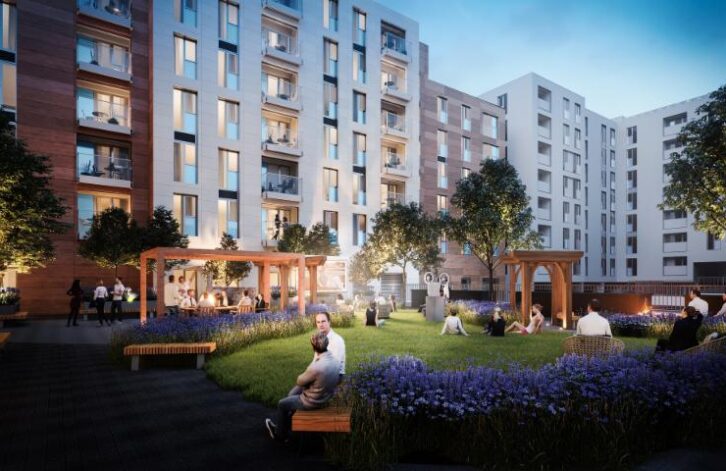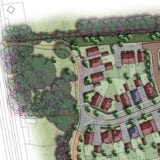The number of Build to Rent homes complete, under construction and in planning across the UK has increased by 30% in the last year, according to the first annual data on the sector to be published.
To aid transparency in this growing property sector the research has been produced by Savills, commissioned by the British Property Federation (BPF) and will be published quarterly.
It reveals that in the UK there are now 117,893 Build to Rent homes across all stages of the development lifecycle, compared to 90,761 at the end of the first quarter of 2017.
When looking specifically at the number of completed Built to Rent homes, the total has increased by 45%, growing from 14,371 to 20,863, in the same period. This figure is even higher for the number of Build to Rent homes under construction, which has increased by 47%.
The research has also tracked the capacity of strategic sites across the country identified for Build to Rent. A total of 17,578 homes have been earmarked by local authorities and developers for delivery on these sites.
The number of homes provided by the Build to Rent sector continues to grow in both London and the regions but the regions now have a significant lead over London in green lighting developments with 62% per cent of all Build to Rent homes under construction. The highest number are in the North West.
Build to Rent is regarded as being a welcome addition to the private rented sector and the Government has backed its growth and it is becoming more diverse with homes now being offered as well as apartments.
‘The Build to Rent sector is evolving quickly, with significant delivery in the regions and more houses, rather than just apartments, coming forward. Policy is also adapting, as to date the sector has grown without a planning blueprint,’ said Ian Fletcher, director of real estate policy at the BPF.
‘This is now changing. With the draft revised National Planning Policy Framework, local authorities will now have to specifically identify how many new rental homes their respective areas need. This has never before been enshrined in UK planning policy,’ he explained.
‘Clearly, there are exemplar local authorities across the UK leading the charge, giving Build to Rent a chance to expand in the regions and demonstrate that it can cater for a wider range of people. The sector, however, has significant potential to deliver more professionally managed homes for all renters seeking higher quality service and facilities,’ he added.
According to Jacqui Daly, director of Savills residential investment research and strategy, there is now real momentum in the sector, having received a significant boost in the draft revised National Planning Policy Framework, which officially recognised the importance of build to rent in bringing forward new homes and the need to define sites to ensure delivery.
‘At this rate of growth, we expect that the Build to Rent pipeline could double to around 200,000 within the next two years,’ she added.
Housing Minister Dominic Raab said that the revised National Planning Policy Framework is a crucial next step in supporting the Build to Rent sector, reforming planning rules, and helping to deliver 300,000 homes a year by the mid 2020s.
‘This Government is backing reform with £4.1 billion to fund the roads, schools and medical centres needed to reinforce our local communities, as we build the homes Britain sorely needs,’ he added.
Diversity is key to the sector’s success, according to Stephanie Smith, operations director of Atlas Residential. ‘When we talk about rented accommodation, too often the image that springs to mind is of young, single tenants sharing a flat, living close to work as they try to start climbing the career ladder. However, that stereotype is becoming increasingly outdated, meaning that the way we design and deliver rental developments needs to change,’ she said.
She believes that the future is creating rental homes for everyone, from a new graduate to a retiree who has decided they don’t want the hassle of a mortgage or home repairs and prefer a social community setting. It also needs to attract renters with pets and those who work from home.
‘We need to shift our definition of a typical Build to Rent home. One and two bedroom apartments are great for many renters, but there’s also a sorely overlooked need for low rise, quality family apartments and homes that can be rented long term,’ she pointed out.
‘Whether people rent by choice or as a result of an inability to afford to purchase property, they deserve to have high quality accommodation that meets their individual needs. The UK is already behind in terms of adapting designs,’ she added.
‘The rental market has already changed significantly but we have much to do to catch up and provide the homes that the country needs. Only through substantial effort will we ensure that all renters’ needs are met. The Build to Rent sector is well positioned to do this. We just need to continue striving to innovate and to design our services around future needs, as well as current ones,’ Smith concluded.






